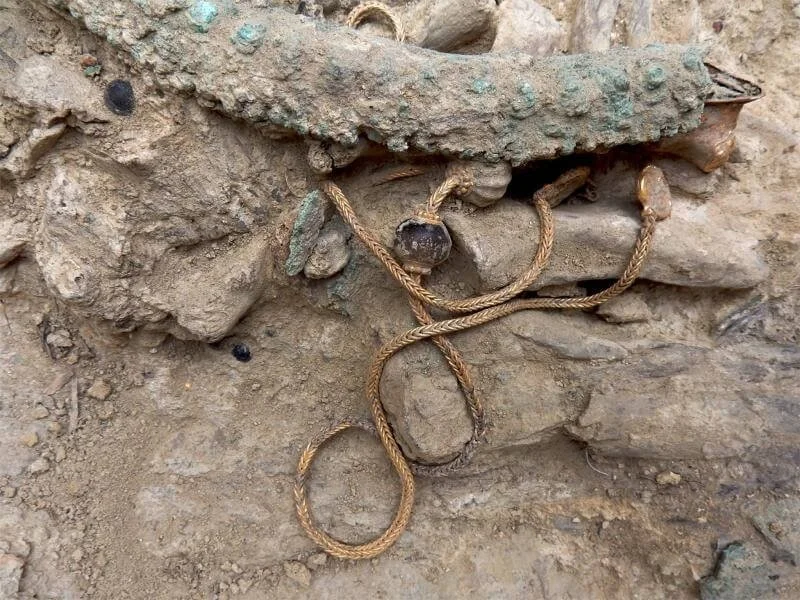Archaeological discoveries often provide us with remarkable glimpses into the lives and cultures of our ancient ancestors. One such discovery has recently captured the attention of scientists and archaeologists alike—a Neolithic ornate necklace, adorned with over 2,500 stones and artifacts, found in the grave of a child in Jordan. This single accessory has opened a window into the social complexity of Neolithic culture, shedding light on the intricate web of relationships that defined the lives of people over 9,000 years ago.
Body adornments, such as jewelry and ornaments, have always served as powerful symbols, conveying cultural values and individual identities. They are invaluable artifacts for researchers seeking to understand the customs, beliefs, and social hierarchies of ancient civilizations. In the case of the Neolithic necklace discovered in Jordan, its significance transcends its beauty and craftsmanship.
Hala Alarashi, a researcher affiliated with the Consejo Superior de Investigaciones Científicas in Spain and the Université Côte d'Azur in France, led the team of scientists in analyzing the materials that adorned the body of an eight-year-old child buried in the Neolithic village of Ba'ja. This archaeological site in Jordan dates back to a period between 7400 and 6800 BCE, making it a treasure trove of ancient history.
The necklace, now meticulously reconstructed and displayed in the Petra Museum in Southern Jordan, is a testament to the artistry and craftsmanship of the time. Comprising more than 2,500 colorful stones and shells, two exceptionally rare amber beads (the oldest of their kind found in the Levant), a substantial stone pendant, and a delicately engraved mother-of-pearl ring, the necklace is a marvel of Neolithic jewelry.
By analyzing the composition, workmanship, and spatial arrangement of these items, the researchers concluded that they once formed a single, composite, multi-row necklace. Over the millennia, it had disintegrated into its individual components, but through the painstaking efforts of the scientific team, it has been recreated in its original glory.
What makes this necklace even more remarkable is that it offers insights into the funerary practices of the Neolithic period, particularly for individuals of high social status. The creation of such an intricate and ornate necklace would have required meticulous craftsmanship, as well as the procurement of exotic materials from distant regions. This suggests complex social dynamics within the community at Ba'ja, including the presence of artisans, traders, and high-status individuals who had the means and authority to commission such pieces.
In a statement, the authors of the study highlighted the symbolic significance of adorning the deceased child, bridging the realms of life and death. This extraordinary discovery from the ancient village of Ba'ja provides us with a glimpse into the spiritual and cultural beliefs of a civilization that flourished thousands of years ago.
The implications of this find are far-reaching, as it underscores the need for further investigation into the Neolithic culture at Ba'ja. The necklace serves as a tangible link to the past, connecting us to a society that thrived in a world very different from our own.
This groundbreaking study was published in the journal PLoS ONE, and it reminds us of the enduring power of archaeology to illuminate the hidden facets of our shared human history. As we gaze upon the meticulously reconstructed necklace on display in the Petra Museum, we are transported back in time, and for a moment, we stand in awe of the ingenuity and artistry of our Neolithic ancestors.
In conclusion, the discovery of the Neolithic ornate necklace in a child's grave in Jordan is a testament to the rich tapestry of human history. This remarkable find not only showcases the artistic achievements of our ancestors but also invites us to ponder the complex social dynamics and spiritual beliefs that once thrived in a distant era. As archaeologists continue to unearth treasures from the past, we are reminded that the past is not lost but patiently waiting to be rediscovered, one artifact at a time.







